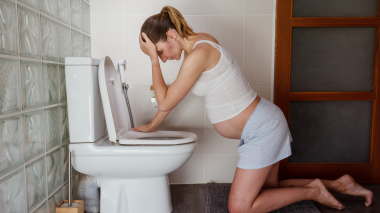Your bags are packed. You have your photo ID. The stove is off. The thermostat is off. You have your ticket. Next stop – the airport. You finally make it past security and are in the airplane aisle waiting for strangers to store their belongings overhead – you’re somewhere in the middle of the 50 people waiting – you hear a cough; a sneeze; another cough. You reach for the hand sanitizer in your bag, place a dab in the palm of your hands, and start telling yourself ‘I’m not getting sick.’
There’s a common misconception that the air circulating through the cabins of airplanes is responsible for the spread of germs emanating from each passenger’s cough or sneeze. This urban myth leaves travelers believing that if one passenger is sick, everyone will get sick because the air being recirculated is saturated with germs. What most don’t know is that you’re more likely to come in contact with germs opting for an aisle seat than sitting directly under the air vent and taking deep breaths – but we’ll get back to that aisle seat.
The air that’s flowing through the cabin of your plane is clean. Today’s airplane engines are built with what’s known as compressor stages – these pull air from outside the plane into the cabin. The stages compress the outside air until it matches the pressure of the cabin. Both the outside air and inside air of your plane are cycled through filters, delivering recirculated air that is 99 percent free of any airborne particles, bacteria and viruses. In addition to the filters, the average plane cabin releases cycled air about 20 times an hour through outflow valves, which release circulated air and pull fresh air into the cabin. To draw a comparison, the average office building, which uses the same High-Efficiency Particulate Air (HEPA) filters as planes, refreshes cycled air about 12 times an hour.
Now, let’s get back to that aisle seat. The real reason you’re getting sick on your flight is due to the bacteria left behind or transferred from travelers. Don’t be afraid of the fan overhead – be worried about the tray table and the armrests. These areas are more likely to transfer germs. The armrest of the aisle seat is more likely to come in contact with travelers than anything else on the plane. When your fellow travelers are moving up and down the aisle, they likely balance themselves with the armrests. Anyone with a cold, or someone that didn’t wash their hands after the lavatory, can transmit bacteria.
The moral of this story: Forget the mask and stock up on antibacterial wipes if you want to avoid that cold. When you sit down, wipe your armrest, your tray table, and any other surfaces you’ll come in contact with during your flight. Once your surfaces are cleaned, crank that overhead fan to full blast and enjoy a cool, bacteria-free flight.



